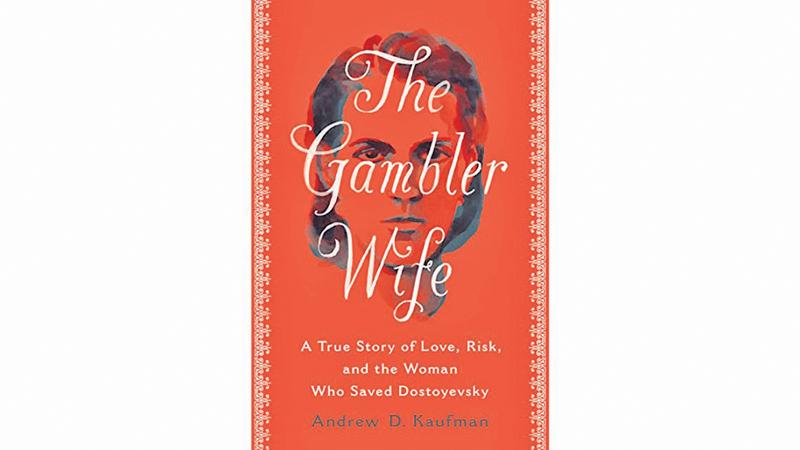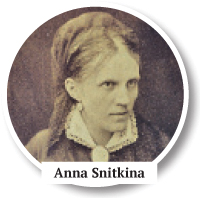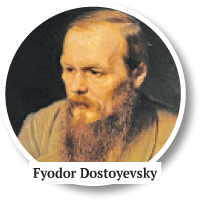
Title: The Gambler Wife: A True Story of Love, Risk, and the Woman Who Saved Dostoyevsky
Author: Andrew D. Kaufman
Publisher: Riverhead Books
Pages: 374
This is the true story of Anna Snitkina Dostoyevskaya (1846-1918), wife (second and final) of one of the 19th century’s greatest novelists Fyodor Dostoyevsky. Andrew D. Kaufman, The author of the book, is a scholar of Slavic languages and literature, especially Russian literature, and so it is clear he did an in-depth research for the book.
First meeting
Dostoyevsky first met Anna Snitkina in October 1866 when he was drowning in debts because of his gambling. He was facing an impossible deadline for the books he promised to finish for various publishers. The situation was so dire that a friend of Dostoyevsky’s suggested gathering a group to ghostwrite the story for him. In the end, he decided to hire a stenographer to speed up his writing process. So this is how a 20-year-old stenographer Anna Snitkina arrived in Dostoyevsky’s home.
Though Anna was selected as Dostoyevsky’s stenographic secretary, he didn’t impress her: she nearly rejected to attend the job. She later recalled, “I didn’t like him; he made me feel depressed.” And on the other hand, it is also unclear what attracted Dostoyevsky to Anna. It may be her eventual intense devotion and ability to weather his moods. Or it might be her age: she was more than 24 years his junior. After their swift completion of “The Gambler,” the final installment of ‘Crime and Punishment’ was due. And then he decided to propose which really happened, and a year after they married in 1867.
A captivating portrait
 ‘The Gambler Wife’ offers a fresh and captivating portrait of the woman who reversed the novelist’s downfall and cleared the way for two of the most notable careers in Russian letters — her husband’s and her own. And also it creates a sympathetic portrait of Anna Snitkina.
‘The Gambler Wife’ offers a fresh and captivating portrait of the woman who reversed the novelist’s downfall and cleared the way for two of the most notable careers in Russian letters — her husband’s and her own. And also it creates a sympathetic portrait of Anna Snitkina.
Anna was a self-described “emancipated girl of the sixties”. She had come of age during Russia’s first feminist movement. Dostoyevsky was known as a notorious radical turned acclaimed novelist at the time. Hence, he had impressed the young woman with his enlightened and visionary fiction. Yet when she started to work with him in person, she found the writer “terribly unhappy, broken, tormented,” weakened by epilepsy, and yoked to a ruinous gambling addiction. Alarmed by his condition, Anna became his trusted first reader and confidante, then his wife, and finally his business manager—launching one of literature’s most turbulent and fascinating marriages. All these unwritten facts about Anna Snitkina are included in the book.
Resources for the book
To write this biography, Andrew D. Kaufman heavily relies on Anna Snitkina’s memoir titled Reminiscences, as well as letters and diaries. He, especially, associates with diaries including her secret diary from the turbulent first year of their marriage. Thus, he reveals how Anna warded off creditors, family members, and her greatest romantic rival, keeping the young family afloat through years of penury and exile.
Dramatic pieces
 Author, here, compiles a series of dramatic set pieces together. The readers could watch as she navigates the writer’s self-destructive binges in the casinos of Europe — even hazarding an audacious turn at roulette herself — until his addiction is conquered. And, finally, we watch as Anna frees her husband from predatory contracts by founding her own publishing house.
Author, here, compiles a series of dramatic set pieces together. The readers could watch as she navigates the writer’s self-destructive binges in the casinos of Europe — even hazarding an audacious turn at roulette herself — until his addiction is conquered. And, finally, we watch as Anna frees her husband from predatory contracts by founding her own publishing house.
As critics elaborated, this is a story that challenges ideas of empowerment, sacrifice, and female agency in nineteenth-century Russia — and a welcome new appraisal of an indomitable woman whose legacy has been nearly lost to literary history.
A page-turner
Anna Snitkina was from some influential family. Her father was a civil servant, and he strongly opposed her daughter’s marriage to Dostoyevsky though he admired his fiction. On the other hand, being married to Dostoyevsky was not at all easy, because he was a traumatised, emotionally volatile gambler, tortured by nightmares.
Kaufman shows through the book how Anna was able to guide him in directions that allowed him to fulfill his commitments and write The Brothers Karamazov, among other career-defining works. While Kaufman highlights how important Anna Snitkina was to Dostoyevsky’s success as a novelist, to his stability, and to preserving his legacy after he died in 1881, he also emphasizes Anna’s own business acumen in starting a publishing company to produce her husband’s work, in paying off his debts, and in selling and promoting his novels.
With colourful details, he successfully corrects biographical accounts that have “erased” Snitkina’s flair. And the book is a highly readable page-turner and the narrative will appeal to Dostoyevsky fans and literature-lovers in general.
Reviews
 In a review in The New York Times, Dr. Jennifer Wilson, a veteran in Russian literature at Princeton University, says that “In the early years of her marriage, Anna was called on to practice superhuman levels of selflessness and forgiveness. She lived at the mercy of her husband’s gambling addiction, teetering on financial ruin for years — at one point having to pawn her own underwear. Dostoyevsky did little to shield her from his domineering family, who tried to control his purse strings.”
In a review in The New York Times, Dr. Jennifer Wilson, a veteran in Russian literature at Princeton University, says that “In the early years of her marriage, Anna was called on to practice superhuman levels of selflessness and forgiveness. She lived at the mercy of her husband’s gambling addiction, teetering on financial ruin for years — at one point having to pawn her own underwear. Dostoyevsky did little to shield her from his domineering family, who tried to control his purse strings.”
According to Dr. Jennifer Wilson, Anna was unprepared for this fate, having grown up in a stately home in St. Petersburg, in a family, she later wrote, “without quarrels, dramas or catastrophes.” Her father, opposed to marry him said to her, “Unfortunately, the man got mixed up in politics, landed in Siberia and vanished there without a trace.”
Honeymoon
A sizable portion of Kaufman’s biography is devoted to the couple’s “honeymoon” as well. It was a three-month trip to Germany — Anna ultimately got her way, despite the stepson’s objections — that ended up lasting four years. Dostoyevsky’s gambling habit had become so acute that they could not return to Russia without fear that he would be arrested at the border and sent to debtors’ prison. As Dr. Jennifer Wilson describes the daily trips to the pawnbroker took their toll, and the two composed light verse mocking their unhappiness, including this one by Anna: “Your last money / you blew at roulette, / and now you don’t have / a three-kopeck piece, you numbskull.”
Anna as a publisher
 The final third of the book is devoted to Anna’s second act: as Dostoyevsky’s principal publisher. Realizing that setting up an imprint was the only way to avoid predatory agreements like the one that brought her and her husband together in the first place, Anna began printing his work — previously released in serialization — as stand-alone books.
The final third of the book is devoted to Anna’s second act: as Dostoyevsky’s principal publisher. Realizing that setting up an imprint was the only way to avoid predatory agreements like the one that brought her and her husband together in the first place, Anna began printing his work — previously released in serialization — as stand-alone books.
According to Kaufman, Anna was the first solo woman publisher in Russia. In fact, once Sofya Tolstaya, the wife of Leo Tolstoy, sought her advice when she decided to set up a similar operation. It was against this less pressured financial backdrop that Dostoyevsky was able to compose his magnum opus, ‘The Brothers Karamazov’ (1880), in the year before his death.
Heavy burden
During 14 years of their marriage, Anna had to bear heavy burden, especially a burden of her husband’s narcissism, misogyny, and infidelity; the ‘destructive mania’ of his gambling addiction; his unpredictable epileptic seizures; and the deaths of two of their four children. Their finances were also so precarious that they frequently had to pawn their possessions. Kaufman describes that at times, Anna herself pushed him to gamble — once even joining him at roulette, leading him to call her his ‘gambler wife’ — apparently because she believed that gambling fueled his creative spirit.
Anyway, through this book Andrew D. Kaufman is able to record a hidden chapter of one of 19th century’s remarkable lives.
